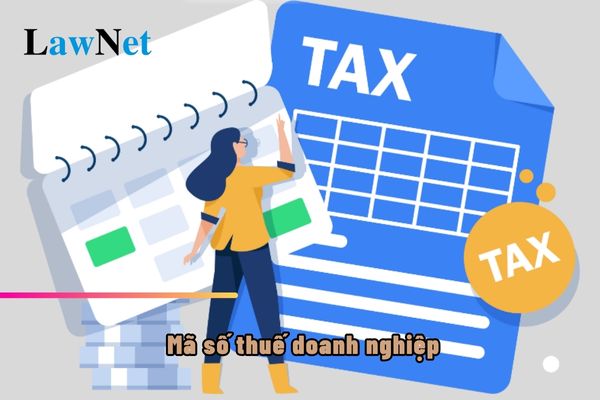Vietnam: Is the enterprise's taxpayer identification number also the enterprise's ID number?
Vietnam: Is the enterprise's taxpayer identification number also the enterprise's ID number?
Based on Clause 1, Article 8 of Decree 01/2021/ND-CP regulating the enterprise ID number as follows:
Enterprise ID number, dependent unit ID number of the enterprise, business location ID number
1. Each enterprise is assigned a unique number called the enterprise ID number. This number also serves as the taxpayer identification number and the social insurance participation number of the enterprise.
...
Therefore, it can be understood that the enterprise's taxpayer identification number is also the enterprise ID number.

Vietnam: Is the enterprise's taxpayer identification number also the enterprise's ID number? (Image from Internet)
Which system automatically generates the enterprise ID number in Vietnam?
According to Clause 3, Article 8 of Decree 01/2021/ND-CP regulating the enterprise ID number as follows:
Enterprise ID number, dependent unit ID number of the enterprise, business location ID number
...
2. The enterprise ID number exists throughout the operation of the enterprise and cannot be re-assigned to other organizations or individuals. When the enterprise ceases to operate, the enterprise ID number ceases to be valid.
3. The enterprise ID number is automatically generated, sent, and received by the National Enterprise Registration Information System and the taxpayer registration information system, and is recorded on the Business Registration Certificate.
4. Government management agencies uniformly use the enterprise ID number for state management and exchange of business information.
5. The dependent unit ID number of the enterprise is assigned to the enterprise's branches and representative offices. This number is also the taxpayer identification number of the branches and representative offices.
6. The business location ID number is a 5-digit number assigned sequentially from 00001 to 99999. This number is not the taxpayer identification number of the business location.
7. In cases where the enterprise, branch, or representative office has its taxpayer identification number invalidated due to tax law violations, the entity is prohibited from using the taxpayer identification number in economic transactions from the date announced by the tax authority.
8. For branches and representative offices established before November 1, 2015, which have not been assigned a dependent unit ID number, the enterprise should contact the tax authority for the issuance of a 13-digit taxpayer identification number, then proceed with the procedure for changing the operation registration content at the Business Registration Office as regulated.
9. For enterprises established and operating under an Investment License or Investment Certificate (also serving as a Business Registration Certificate) or equivalent legal documents, or a Securities Business License, the enterprise ID number is the taxpayer identification number issued by the tax authority to the enterprise.
The enterprise ID number is automatically generated by the National Enterprise Registration Information System and the taxpayer registration information system.
What is the current 10-digit taxpayer identification number structure?
Based on Clause 1, Article 5 of Circular 105/2020/TT-BTC guiding taxpayer registration regulations as follows:
Tax Number Structure
1. Tax Number Structure
N1N2 N3N4N5N6N7N8N9 N10 - N11N12N13
Where:
- The first two digits N1N2 are the tax code range.
- The seven digits N3N4N5N6N7N8N9 follow a specified structure, incrementing from 0000001 to 9999999.
- The digit N10 is a check digit.
- The three digits N11N12N13 are sequence numbers from 001 to 999.
2. The enterprise ID number, cooperative ID number, and the dependent unit number of the enterprise or cooperative assigned by business registration law are the taxpayer identification numbers.
3. Types of tax number structures
a) The 10-digit taxpayer identification numbers are used for enterprises, cooperatives, legal entities, and organizations without legal status but directly responsible for tax obligations; family representatives, business households, and other individuals (referred to as independent units).
b) The 13-digit taxpayer identification numbers, with a hyphen (-) separating the first 10 digits and the last 3 digits, are used for dependent units and other entities.
...
The structure of the 10-digit taxpayer identification number is specified as follows:
N1N2 N3N4N5N6N7N8N9 N10
In which:
- The first two digits N1N2 are the tax code range.
- The seven digits N3N4N5N6N7N8N9 follow a specified structure, incrementing from 0000001 to 9999999.
- The digit N10 is a check digit.
- The hyphen (-) is a character used to separate the group of the first 10 digits and the group of the last 3 digits.

